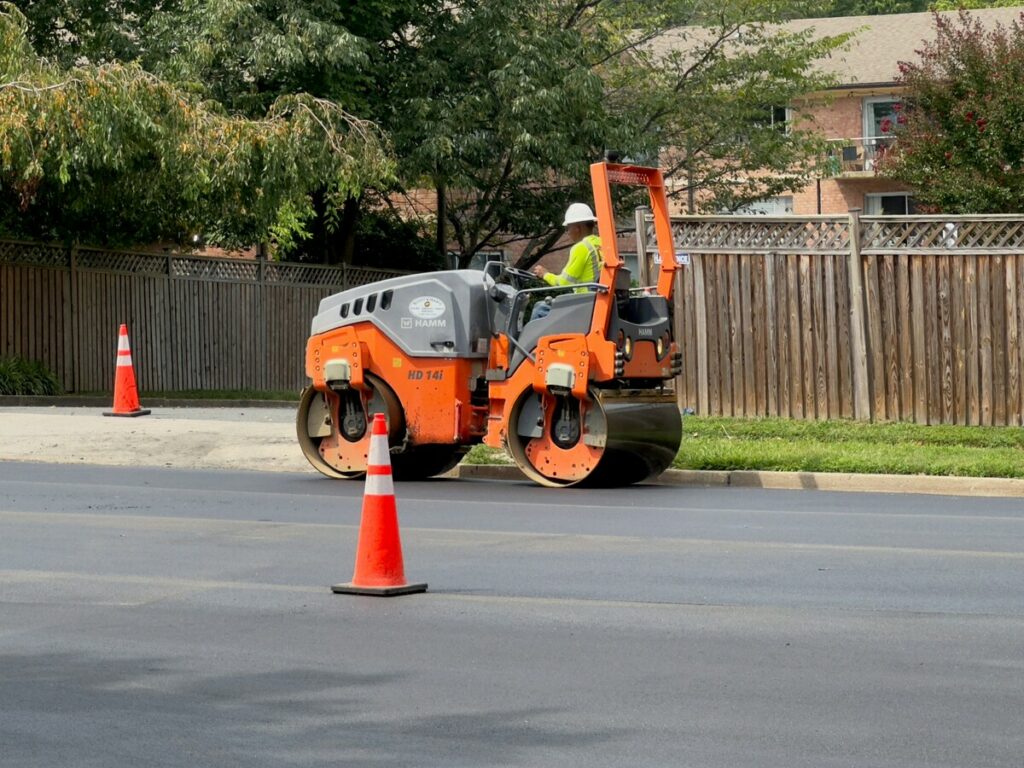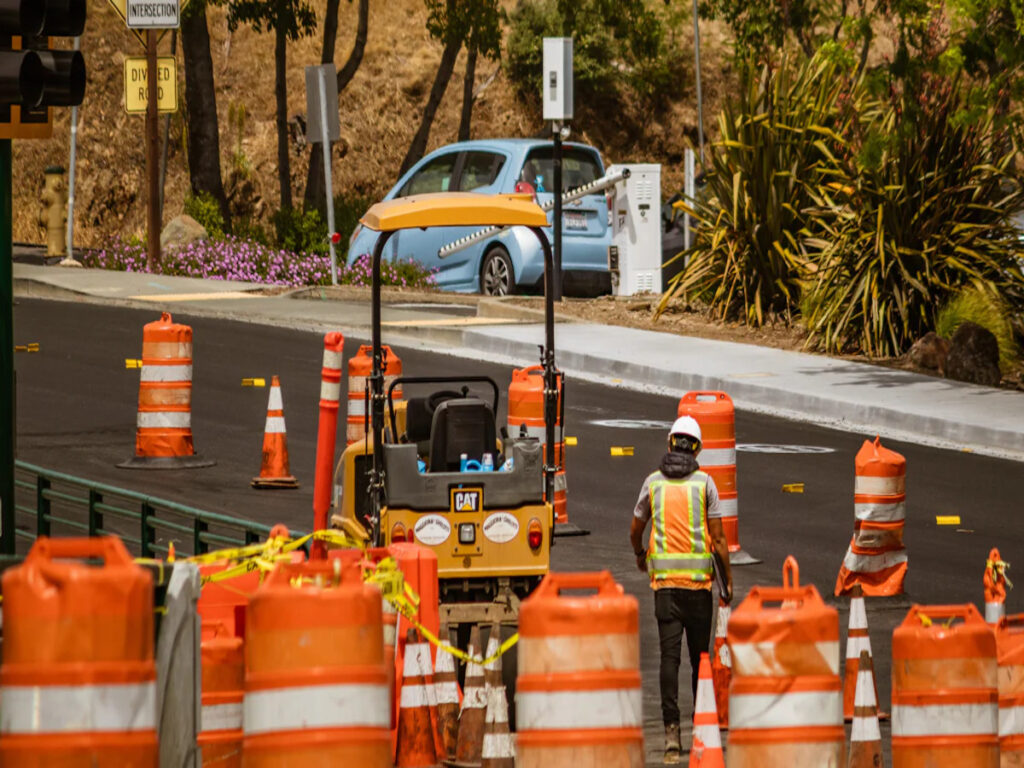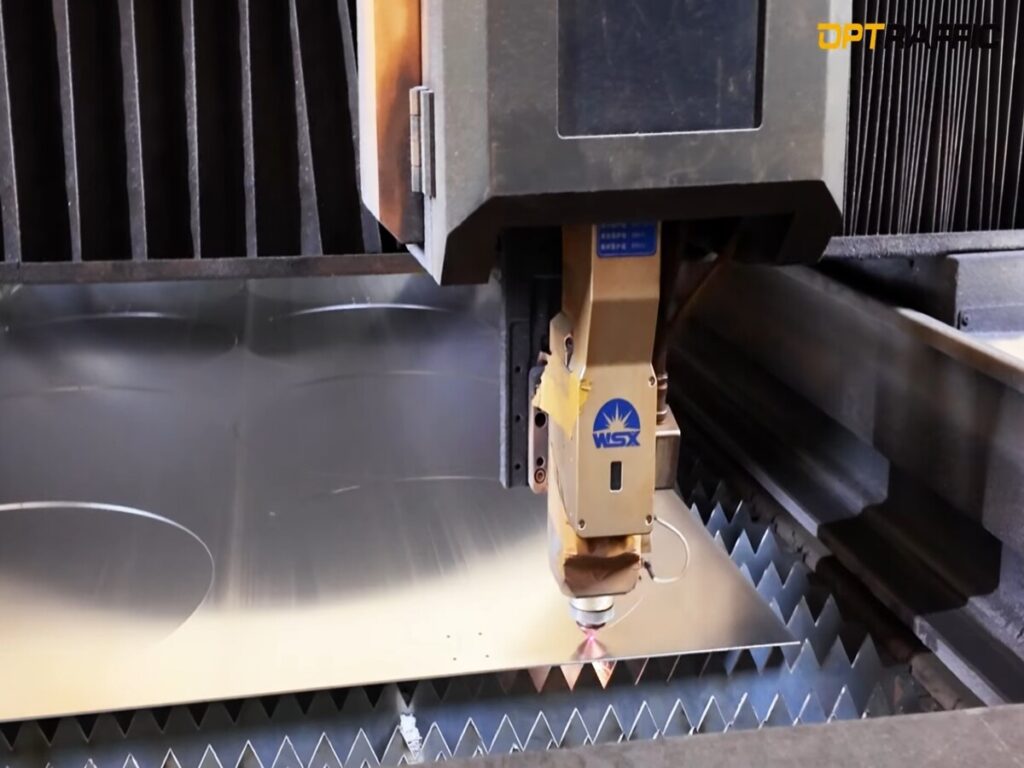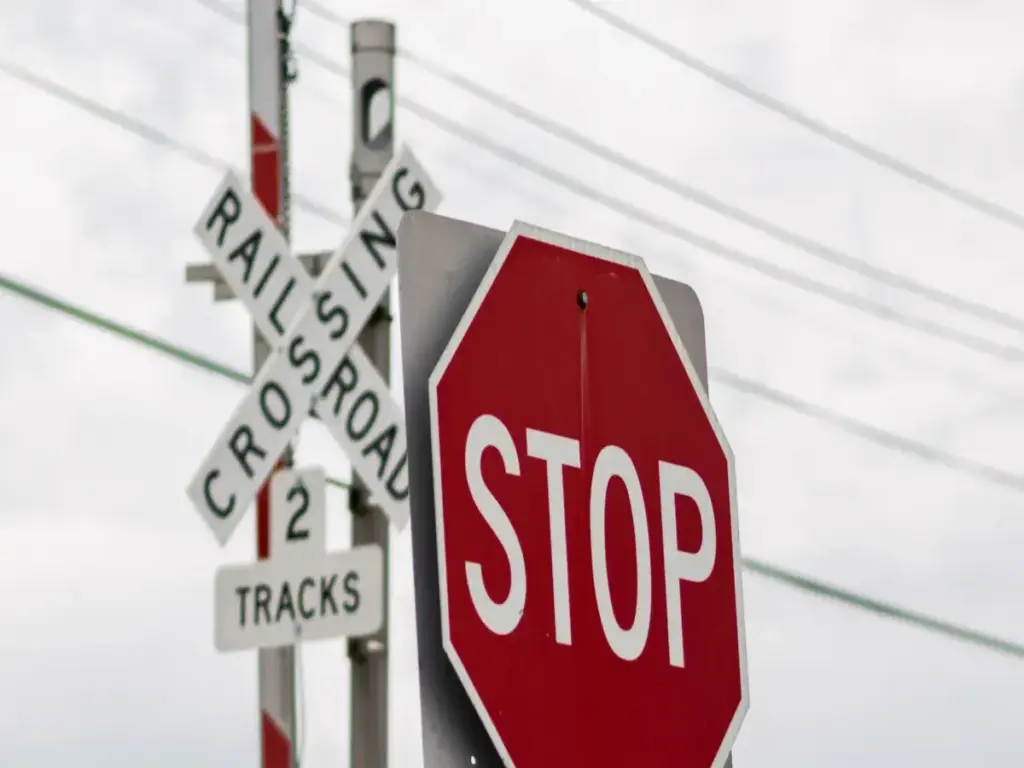
Road safety plays a critical role in ensuring smooth transportation and protecting lives. You encounter risks daily, whether as a driver, pedestrian, or worker in high-traffic zones. Traditional methods of deploying a large traffic cone often expose workers to danger and cause delays. An automated cone-laying solution transforms this process by enhancing safety and efficiency. These systems reduce human involvement in hazardous tasks and streamline traffic management. Innovation in this field not only saves time but also minimizes accidents, making roads safer for everyone.
The Limitations of Traditional Traffic Cone Deployment
Safety Risks for Workers
Exposure to live traffic during manual deployment
When workers manually place traffic cones, they often step into active traffic lanes. This exposes them to speeding vehicles and distracted drivers. You can imagine how dangerous this situation becomes, especially during peak hours or in low-visibility conditions like nighttime or bad weather. The risk of accidents increases significantly, putting lives at stake.
Physical strain and injury risks from repetitive tasks
Manually deploying and retrieving traffic cones involves repetitive bending, lifting, and carrying. These actions can lead to physical strain over time. Workers may experience back pain, muscle fatigue, or even long-term injuries. This repetitive nature of the task makes it both physically demanding and hazardous.
Operational Inefficiencies
Time-consuming processes causing traffic delays
Manual deployment of traffic cones takes time. Workers must carefully place each cone, often walking long distances along the road. This slow process can cause unnecessary traffic congestion. You may have experienced frustration as a driver waiting in long queues caused by such delays.
Increased labor costs and resource allocation
Manual deployment requires a team of workers, vehicles, and equipment. This increases labor costs and diverts resources from other critical tasks. For companies managing large-scale projects, these inefficiencies can lead to higher operational expenses.
Environmental Concerns
Higher fuel consumption due to prolonged road closures
Prolonged road closures caused by manual cone deployment lead to idling vehicles. This increases fuel consumption and contributes to air pollution. You might not realize it, but these delays have a direct impact on the environment.
Increased risk of accidents during manual operations
Manual operations often require workers to remain on the road for extended periods. This increases the likelihood of accidents involving both workers and passing vehicles. The longer the road remains closed, the higher the risk becomes for everyone involved.
The Rise of Automated Cone-Laying Solutions

What Are Automated Cone-Laying Solutions?
Overview of their design and functionality
Automated cone-laying solutions revolutionize how you manage road safety. These systems use advanced machinery to deploy and retrieve traffic cones without manual intervention. Mounted on specialized vehicles, they operate seamlessly to place cones at precise intervals. This ensures consistent spacing and alignment, which improves visibility for drivers. The design focuses on reducing human involvement in hazardous tasks while maintaining accuracy and speed.
OPTsigns provides high-quality traffic cones that are ideally suited for use with these automated systems. OPTsigns traffic cones are designed for durability and visibility, featuring reflective materials and sturdy bases that ensure they remain stable in various weather conditions.
Key components and technologies involved
These systems rely on several key components. A conveyor mechanism moves cones from storage to deployment. Robotic arms or automated rollers handle the placement process. Sensors and cameras guide the system, ensuring cones are positioned correctly. Some models even include GPS technology to map deployment routes. These components work together to deliver efficient cone-laying operations, enhancing both safety and productivity.
Technological Innovations in Deployment Systems
Historical context and the push for automation
The need for safer and faster traffic management has driven innovation in this field. Manual methods posed risks and caused delays, prompting engineers to explore automation. Over the years, advancements in robotics and machine learning have made automated systems more reliable and accessible. Today, these solutions address the challenges of traditional methods while meeting modern safety standards.
Integration of AI and IoT for smarter traffic management
Artificial intelligence (AI) and the Internet of Things (IoT) play a crucial role in these systems. AI algorithms analyze traffic patterns to optimize cone placement. IoT devices connect the system to central traffic management networks, enabling real-time updates. This integration allows you to monitor and adjust deployments remotely, ensuring smoother traffic flow and improved safety.
How Automated Systems Work
Step-by-step process of automated cone deployment
The process begins with loading cones into the system’s storage unit. As the vehicle moves along the road, the conveyor mechanism feeds cones to the deployment arm. Sensors detect the correct placement points, and the arm positions each cone accurately. Once the task is complete, the system can also retrieve cones using a similar mechanism. This streamlined process ensures quick and precise deployment.
Integration with existing traffic management systems
Automated cone-laying solutions integrate seamlessly with current traffic management systems. They communicate with control centers to coordinate deployments based on traffic conditions. This compatibility ensures that you can implement these systems without overhauling existing infrastructure. The result is a more efficient and responsive approach to managing road safety.
The Benefits of Automated Traffic Cone Deployment Systems

Enhancing Worker Safety
Minimizing direct exposure to traffic
Automated systems keep workers away from active traffic lanes. You no longer need to step into dangerous zones to place or retrieve cones. This reduces the chance of accidents caused by speeding vehicles or distracted drivers. By using these systems, you create a safer environment for everyone involved in roadwork or construction projects.
Reducing physical strain and injury risks
Manually handling large traffic cones can lead to physical strain. Repeatedly bending, lifting, and carrying cones increases the risk of injury. Automated solutions eliminate these tasks. Workers can focus on monitoring operations rather than performing physically demanding activities. This reduces the risk of injury and improves overall job satisfaction.
Improving Efficiency
Faster deployment and retrieval of large traffic cones
Automated systems deploy and retrieve cones much faster than manual methods. You can complete tasks in a fraction of the time it takes with traditional approaches. This speed ensures that roadwork or construction zones are set up quickly, minimizing disruptions.
Lower labor costs and resource requirements
With automated systems, fewer workers are needed to manage cone deployment. You save on labor costs and free up resources for other critical tasks. This streamlined approach improves efficiency while reducing overall project expenses.
Reducing Traffic Disruptions
Shorter road closures and smoother traffic flow
Automated systems reduce the time required to set up and remove reflective traffic cones. Shorter road closures mean smoother traffic flow. Drivers experience fewer delays, and you maintain better control over traffic conditions.
Improved public perception of roadwork efficiency
When you use automated systems, the public notices the difference. Faster setups and reduced disruptions create a positive impression. People appreciate the use of advanced technology to improve roadwork efficiency. This enhances trust in your ability to manage construction projects effectively.
Tip: Automated systems work seamlessly with standard orange cones and reflective traffic cones, ensuring visibility and safety in all conditions.
Environmental Advantages
Reduced fuel consumption and emissions
Automated traffic cone deployment systems significantly reduce fuel consumption. When you use these systems, road closures are shorter, and vehicles spend less time idling in traffic. This directly lowers fuel usage, which helps decrease harmful emissions. You might not realize it, but every minute a car idles contributes to air pollution. By minimizing delays in construction zones, automated systems create a positive environmental impact.
These systems also optimize traffic flow. When vehicles move smoothly, they burn fuel more efficiently. This reduces the carbon footprint of roadwork activities. You can see how this small change in traffic management can lead to a big impact on air quality. Automated solutions not only improve safety but also contribute to cleaner air for everyone.
Contribution to sustainable road maintenance practices
Sustainability is a growing priority in road maintenance. Automated cone-laying systems align with this goal by reducing resource waste. When you rely on these systems, fewer workers and vehicles are needed in construction zones. This lowers the overall energy consumption of roadwork projects.
Additionally, these systems extend the lifespan of equipment. Manual deployment often leads to wear and tear on tools and vehicles. Automated systems reduce this strain, which means less frequent replacements. This contributes to sustainable practices by conserving resources.
You also support long-term environmental goals by adopting these technologies. Cleaner operations and reduced emissions make a lasting impact. Automated systems show how innovation in traffic management can align with sustainability efforts. They prove that you can enhance efficiency while protecting the environment.
Note: Automated systems are a step forward in creating eco-friendly construction zones. They demonstrate how technology can balance safety, efficiency, and environmental responsibility.
Broader Implications for Road Safety and Traffic Management
Adoption Across Industries
Use in construction, maintenance, and emergency response
Automated traffic cone deployment systems have applications in various industries. You can see their impact in construction zones, where they enhance traffic management safety by reducing hazards for workers. Maintenance crews also benefit from these systems, as they streamline temporary traffic control in high-risk areas. Emergency response teams find these systems invaluable. They allow for quick setup of traffic control zones during critical situations, ensuring safety measures are in place without delay.
Potential for global standardization
The widespread adoption of these systems could lead to global standardization in traffic management. You might notice how consistent practices improve road safety across regions. Standardized systems simplify training and ensure uniformity in addressing road hazards. This consistency benefits both workers and drivers, creating safer environments worldwide.
Future Trends in Deployment Systems
Integration with autonomous vehicles and AI
The future of traffic management lies in advanced technologies. Automated systems are already integrating with AI to analyze traffic patterns and optimize cone placement. You can expect further advancements, such as integration with autonomous vehicles. These vehicles could deploy cones without human intervention, making roadwork even safer and more efficient.
Potential for fully autonomous roadwork systems
Imagine a future where roadwork becomes entirely autonomous. Cone lane machines could work alongside robotic equipment to handle all aspects of traffic control zones. This innovation would eliminate many hazards associated with manual operations. Fully autonomous systems represent the next step in revolutionizing traffic management safety.
Challenges to Wider Adoption
Initial costs and investment barriers
The initial cost of implementing automated systems can be a barrier. You may find that smaller organizations struggle to afford these technologies. However, the long-term benefits, such as reduced labor costs and improved efficiency, often outweigh the upfront investment.
Need for training and infrastructure upgrades
Adopting these systems requires training workers to operate new equipment. You might also need to upgrade existing infrastructure to support advanced technologies. These challenges can slow adoption, but they are necessary steps toward safer and more efficient traffic management.
Note: Overcoming these challenges will pave the way for broader adoption of automated systems, ensuring safer roads for everyone.
Automated traffic cone deployment systems have transformed how you approach road safety. These systems improve worker safety, enhance efficiency, and reduce environmental impact. Their ability to ensure high visibility in traffic zones makes them indispensable for modern infrastructure. By adopting these solutions, you contribute to safer roads and smoother traffic flow. The future holds even greater potential, with advancements like AI and autonomous vehicles. Broader adoption of these systems will revolutionize traffic management and create safer environments for everyone. You play a vital role in driving this change and ensuring a brighter future for road safety.
















